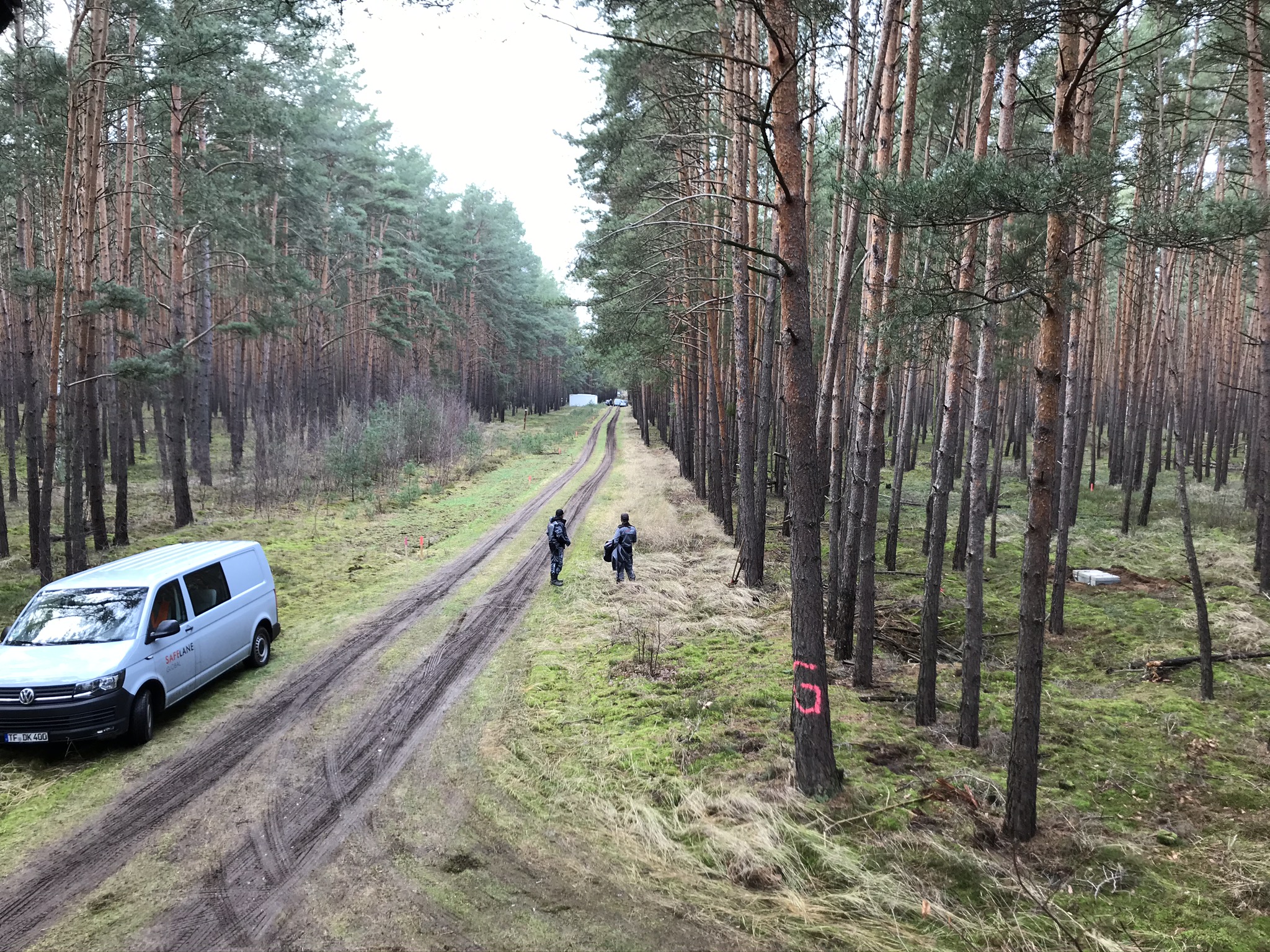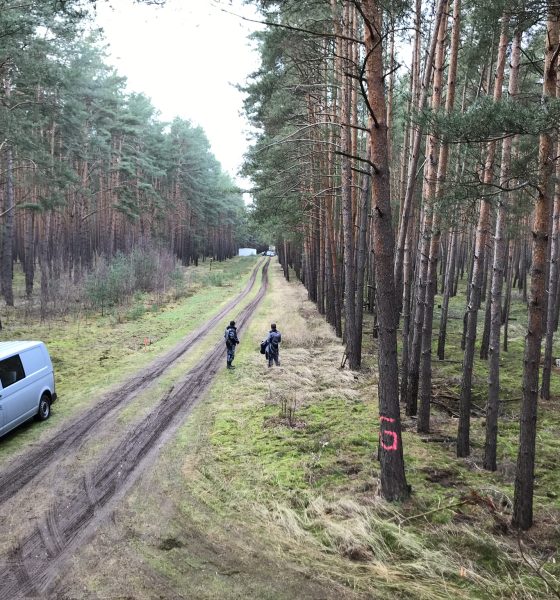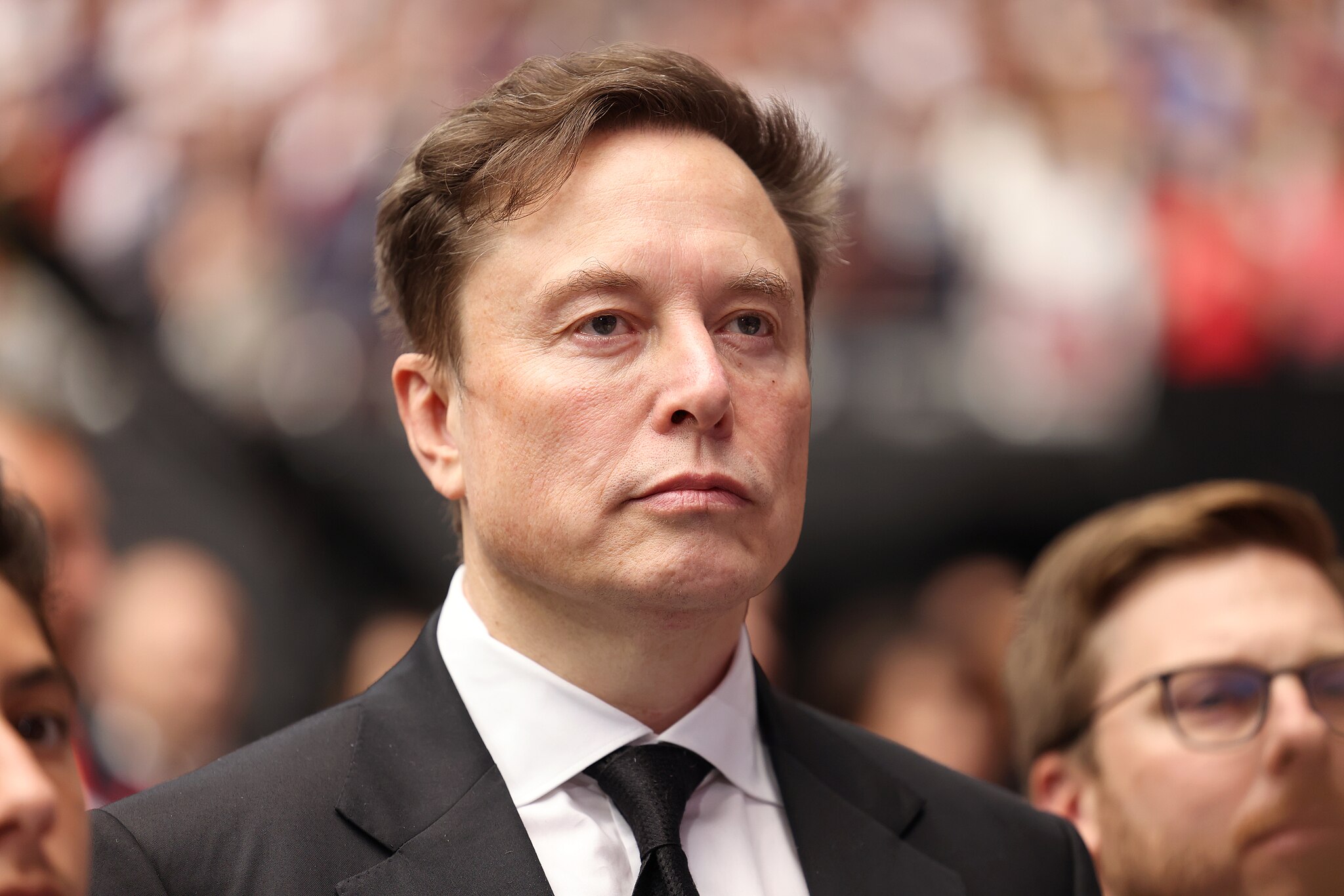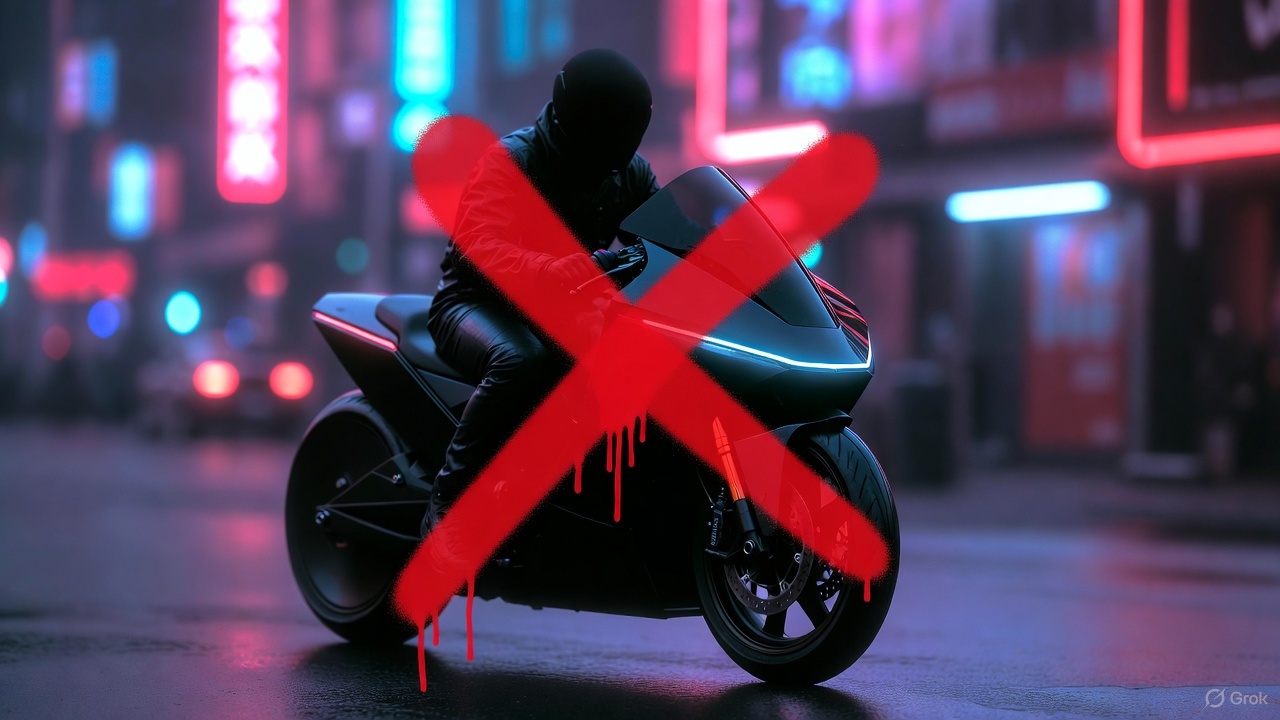

News
Tesla Giga Berlin cleared of water supply concerns as state government begins infrastructure planning
Tesla takes a step closer to begin construction of Giga Berlin in Grunheide as Brandenburg authorities announce initial plans to spend 100 million euros on infrastructure development around the facility. Additionally, the Agriculture and Environment Minister Axel Vogel confirmed during a parliamentary committee on Wednesday that there’s a secure water supply for the entire region, thereby eliminating one of the biggest risks that would have delayed construction of Tesla’s first European factory.
Local residents, business owners, and environmental groups initially sounded the alarm about water, in fear that the California-based electric carmaker’s plans for a large production facility will dry up their local water supply. Tesla plans to initially produce 150,000 electric vehicles annually at Giga Berlin and will eventually ramp up to 500,000 units per year.
Responsible water association Strausberg / Erkner (WSE) addressed the community in a meeting last week, noting that they can meet the water supply needs of the Gigafactory in Grunheide but need additional funding. According to Vogel, WSE supplied about 10.8 million cubic meters of water in 2018 and the government can stretch that to the approved framework of 16 million cubic meters. Tesla’s Giga Berlin will only need about 1.77 million cubic meters of water per year.
“The evaluations will be completed this week and then the approval notice will be issued, there is no reason to be worried that Tesla cannot be supplied with sufficient drinking water,” Vogel said.
In January, Tesla CEO and co-founder Elon Musk also chimed in on the water supply issue and clarified that Giga Berlin is designed with sustainability and the environment in mind.
Giga Berlin / GF4 will absolutely be designed with sustainability and the environment in mind
— Elon Musk (@elonmusk) January 25, 2020
With Water Issues Solved, Government Thinks of Infrastructure
As Tesla Giga Berlin gains momentum with the assurance of the Brandenburg government that there’s enough water supply for the factory and for the rest of the community, authorities have announced plans to spend 10 million euros this year on roads and railway connections. Another 90 million euros will be allocated next year for various infrastructure projects around the car factory and a total of one billion euros would be spent by 2030.
Minister of Transport Guido Beermann disclosed plans for the electrification of the railway siding and an extension or relocation of the Fangschleuse train station.
There are also talks about the expansion of state roads, bus line networks that will serve commuters to Grunheide, and the extension of the S-Bahn, the city’s rapid railway system, to Grunheide.
Tesla enthusiast Emil Senkel has provided a clear illustration of these plans:
being examined:
– electrification of the railway siding
– possible extension of the S-Bahn to Grünheide
– bus lines networksplanned:
– new link parallel to the railway line between the motorway and L23
– extension or relocation of the existing train station
– 4-lane extension pic.twitter.com/R5ElDHJUzY— Emil Senkel (@EmilSenkel) February 13, 2020
With the influx of people expected when Giga Berlin goes online, the government is also planning to spend 30 million euros for new dormitories in nearby areas, 50 million euros for the renovation of dormitories, and 52 million euros for the rehabilitation of municipal bridges and bike lanes.
Environmental Protection Measures
As Tesla completes the necessary requirements to move forward with the construction of its facility in Brandenburg, the carmaker announced the steps it’s taking to ensure all measures are taken to protect the environment. Tesla will put up around 400 nesting boxes for birds breeding in the area and relocate several nests of forest ants. As planned, the carmaker will also search the forest for hibernating bats, forest lizards, and other creatures that need to be moved.
Tesla plans to start production of vehicles at Giga Berlin by July 2021. The factory is expected to employ around 8,000 to 12,000 workers to help with the production of the Model 3 sedan, the Model Y crossover.

News
Tesla’s new Holiday perk is timed perfectly to make FSD a household name
Tesla AI4 owners get FSD (Supervised) through Christmas, New Year’s Eve and well into the post-holiday travel season.

Tesla quietly rolled out a free Full Self-Driving (Supervised) trial for roughly 1.5 million HW4 owners in North America who never bought the package, and the timing could very well be genius.
As it turns out, the trial doesn’t end after 30 days. Instead, it expires January 8, 2026, meaning owners get FSD (Supervised) through Christmas, New Year’s Eve and well into the post-holiday travel season. This extended window positions the feature for maximum word-of-mouth exposure.
A clever holiday gift
Tesla watcher Sawyer Merritt first spotted the detail after multiple owners shared screenshots showing the trial expiring on January 8. He confirmed with affected users that none had active FSD subscriptions before the rollout. He also observed that Tesla never called the promotion a “30-day trial,” as the in-car message simply reads “You’re Getting FSD (Supervised) For the Holidays,” which technically runs until after the new year.
The roughly 40-day period covers peak family travel and gatherings, giving owners ample opportunity to showcase the latest FSD V14’s capabilities on highway trips, crowded parking lots and neighborhood drives. With relatives riding along, hands-off highway driving and automatic lane changes could become instant conversation starters.
Rave reviews for FSD V14 highlight demo potential
FSD has been receiving positive reviews from users as of late. Following the release of FSD v14.2.1, numerous owners praised the update for its smoothness and reliability. Tesla owner @LactoseLunatic called it a “huge leap forward from version 14.1.4,” praising extreme smoothness, snappy lane changes and assertive yet safe behavior that allows relaxed monitoring.
Another Tesla owner, @DevinOlsenn, drove 600 km without disengagements, noting his wife now defaults to FSD for daily use due to its refined feel. Sawyer Merritt also tested FSD V14.2.1 in snow on unplowed New Hampshire roads, and the system stayed extra cautious without hesitation. Longtime FSD tester Chuck Cook highlighted improved sign recognition in school zones, showing better dynamic awareness. These reports of fewer interventions and a more “sentient” drive could turn family passengers into advocates, fueling subscriptions come January.
Elon Musk
Elon Musk predicts AI and robotics could make work “optional” within 20 years
Speaking on entrepreneur Nikhil Kamath’s podcast, Musk predicted that machines will soon handle most forms of labor, leaving humans to work only if they choose to.

Elon Musk stated that rapid advances in artificial intelligence and robotics could make traditional work unnecessary within two decades.
Speaking on entrepreneur Nikhil Kamath’s podcast, Musk predicted that machines will soon handle most forms of labor, leaving humans to work only if they choose to.
Work as a “hobby”
During the discussion, Musk said the accelerating capability of AI systems and general-purpose robots will eventually cover all essential tasks, making human labor a choice rather than an economic requirement. “In less than 20 years, working will be optional. Working at all will be optional. Like a hobby,” Musk said.
When Kamath asked whether this future is driven by massive productivity growth, Musk agreed, noting that people will still be free to work if they enjoy the routine or the challenge. He compared future employment to home gardening, as it is something people can still do for personal satisfaction even if buying food from a store is far easier.
“Optional” work in the future
Elon Musk acknowledged the boldness of his claim and joked that people might look back in 20 years and say he was wrong. That being said, the CEO noted that such a scenario could even happen sooner than his prediction, at least if one were to consider the pace of the advancements in AI and robotics.
“Obviously people can play this back in 20 years and say, ‘Look, Elon made this ridiculous prediction and it’s not true,’ but I think it will turn out to be true, that in less than 20 years, maybe even as little as ten or 15 years, the advancements in AI and robotics will bring us to the point where working is optional,” Musk said.
Elon Musk’s comments echo his previous sentiments at Tesla’s 2025 Annual Shareholder Meeting, where he noted that Optimus could ultimately eliminate poverty. He also noted that robots like Optimus could eventually provide people worldwide with the best medical care.
Elon Musk
Elon Musk reiterates why Tesla will never make an electric motorcycle
Tesla CEO Elon Musk preemptively shut down speculations about a Tesla road bike once more.

Tesla CEO Elon Musk preemptively shut down speculations about a Tesla road bike once more, highlighting that the electric vehicle maker has no plans to enter the electric motorcycle market.
Musk posted his clarification in a post on X.
Musk’s reply to a fun AI video
X user @Moandbhr posted an AI video featuring the Tesla CEO on the social media platform, captioning it with “Mr. Elon Musk Just Revealed the Game-Changing Tesla Motorcycle.” The short clip depicted Musk approaching a sleek, single-wheeled vehicle, stepping onto it, and gliding off into the distance amid cheers. The fun video received a lot of traction on X, gaining 3.1 million views as of writing.
Musk replied to the post, stating that a Tesla motorcycle is not going to happen. “Never happening, as we can’t make motorcycles safe. For Community Notes, my near death experience was on a road bike. Dirt bikes are safe if you ride carefully, as you can’t be smashed by a truck,” Musk wrote in his reply.
Musk’s Past Comments on Two-Wheelers
Musk also detailed his reservations about motorcycles in a December 2019 X post while responding to questions about Tesla’s potential ATV. At the time, he responded positively to an electric ATV, though he also opposed the idea of a Tesla road-going motorcycle. Musk did state that electric dirt bikes might be cool, since they do not operate in areas where large vehicles like Class 8 trucks are present.
“Electric dirt bikes would be cool too. We won’t do road bikes, as too dangerous. I was hit by a truck & almost died on one when I was 17,” Musk wrote in his post.
Considering Musk’s comments about dirt bikes, however, perhaps Tesla would eventually offer a road bike as a recreational vehicle. Such a two-wheeler would be a good fit for the Cybertruck, as well as future products like the Robovan, which could be converted into an RV.









